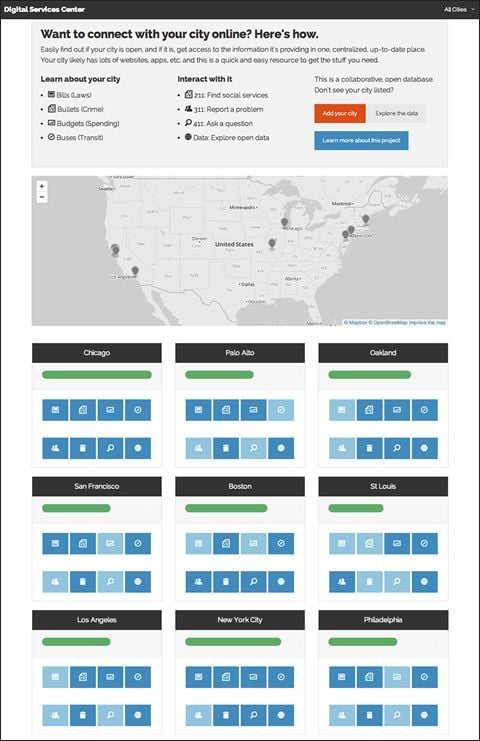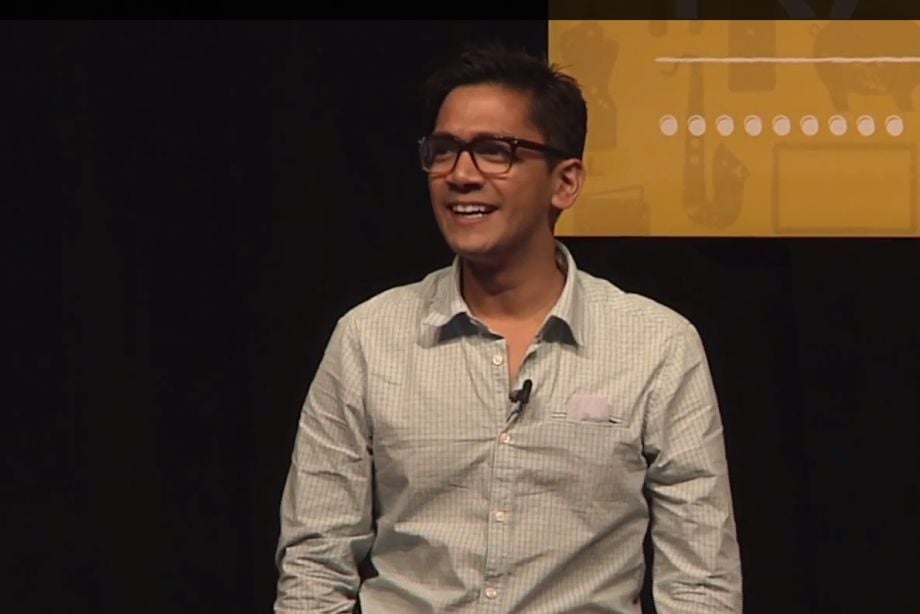Until recently, Abhi Nemani was the acting co-executive director of the San Francisco-based non-profit Code for America, a high-profile participant in the field of civic tech. At the moment, Nemani is relocating to an East Coast city to-be-determined and along the way is spending a few weeks back home in Centralia, a rural town of 13,000 in south central Illinois. The time in his hometown, Nemani says, has opened his eyes to the fact that the digital engagement tools he has been helping to construct, hone and promote from coast to coast for the last four years while at Code for America — from open crime data to transportation apps to 311 — haven’t made much of an impact on daily life in a places like Centralia.
“For recreation, entertainment or growth,” Nemani wrote in a recent piece called “Small (City) Pieces, Loosely Joined,” “you have to look more at St. Louis, MO,” the area’s largest metropolitan area an hour’s drive due west. At the moment, that holds true for digital governing, too. But in a phone interview, we talked about Nemani’s ideas for bringing civic tech to the thousands of U.S. towns that have much more in common with Centralia than with St. Louis.
You’ve been deep in the civic tech movement for years now. And yet you turn up in the place you grew up and find out there’s little evidence there that such a movement exists. It’s a bit of a “the cobbler’s children have no shoes” situation, no?
That’s a good way to think about it. With so many of the people working in this space living in bigger cities — San Francisco, New York, D.C. — we tend to think that every city has that technology. The interesting thing about coming back home and being in the Midwest for a while is that I’m seeing a city that needs this technology in the same way that any of those other cities do. But they just don’t have that infrastructure in place.
I’ve been working with something called the Open Government Foundation, and so I’ve been getting myself more acquainted with local bills and municipal code, because that’s the focus there. I wanted to give myself the experience of trying to get the local code from my own city. So I went through that process, and I realized how frustrating it was. That made me think, “Wow. I’m so used to San Francisco having a great SF Decoded site, a great 311 application. I’m so used to that technology being in place.” And I thought, “I want to have all of that. How do I bring that here?”

As a bit of backstory, there’s a movement in the civic technology field — and I think it’s a good one — to have core pieces of technology that we all should be reusing and building upon. So instead of, say, everyone who wants to put something on a map building their own infrastructure, let’s build a simple mapping component that anyone can deploy. The benefit of that for the developer is obvious. It’s easier, it saves time, and it means joining a community of people working on that same problem. [One example Nemani cites in his piece is Poplus, which says of its mission, “civic websites often need the same basic functionalities, no matter what kind of legislature or form of government they operate within.”]
What I started thinking about was flipping that around so that we’re not asking ourselves how we do it from a developers’ perspective but from a city’s perspective. One of the the things we learned at Code for America is that civic innovation is a lot more successful when you have deep buy-in from a city government. If I put myself in a city’s shoes, I say, “All right. They’re building all this technology. There are all these components out there. How do they fit together? How do they make something coherent and comprehensible for me and my citizens?”
So what I said was, “What if you want take key pieces of the civic tech infrastructure that a city would want — 311, putting bills online, etc. — and you present that in a very easy-to-understand way that takes the links from a city’s digital services and puts them into one interface?”
So you end up with a simple inventory of a city’s existing digital services. But doesn’t that require, you know, having digital services in a way that, for example, Centralia doesn’t?
That’s the exactly the point. One of the operating principles when building this was simplicity, not just from a design perspective but from the perspective of, there’s so much great civic technology out there. There are so many applications. At times, I think, that can be a little overwhelming for a city. So the idea is, what are the eight core things that a city should have in its digital services set.
[The eight are: “Bullets,” as in crime-related tools; “Bills,” as in transparency around legislative data; “Budget,” as in access to information on city finances; “Buses,” as in transportation tools; and “Data” as in open, structured municipal information; as well as a trio of hotlines accessed through various means: “411” for information, “311” for non-emergency assistance, and “211” for social services.]
Then it becomes, “Okay, those are the things that matter. How do I go about deploying them?”
At least if we start saying, “This is the set of eight things that matter and here’s where our cities are on the ladder of getting them,” we can at least know that, “You know what, we’re not doing great at making, say, 211 easily accessible to cities.” And we can say, “Guys, we, as stewards of the civic technology ecosystem, really need to work on this because it’s not there yet.” We can recognize that there’s clearly a gap here, and cities aren’t able to quickly deploy the technology that they need for these core pieces. That’s the kind of data that I don’t think we have right now. But that’s the kind of data we need if we want to quickly get to scale.
If a town like Centralia wants to implement this stuff, will there ever be the bodies on the ground to do it?
The opportunity is that we have the chance to take all of these components that are being built as open-source tools and turn them into companies that offer them to cities as hosted platforms. Even a 10-person shop can put in a credit card number and pay a hundred dollars a month for one of these tools.
We as a civic technology ecosystem need to move towards building the technology we have in a way that lets it get to scale. And we have to put things out there in a way that makes sense to people. When we can get to the point that the technology is abstracted away and the services just work, I think that’s going to be great for cities.
This interview has been edited for length and clarity.

Nancy Scola is a Washington, DC-based journalist whose work tends to focus on the intersections of technology, politics, and public policy. Shortly after returning from Havana she started as a tech reporter at POLITICO.








